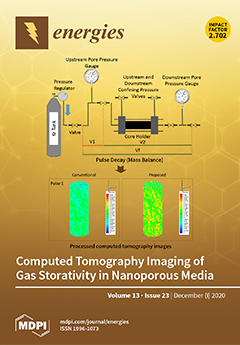Worldwide experiences related to geological CO
2 storage show that the process of the injection of carbon dioxide into depleted oil reservoirs (CCS-EOR, Carbon Capture and Storage—Enhanced Oil Recovery) is highly profitable. The injection of CO
2 will allow an increasing recovery factor
[...] Read more.
Worldwide experiences related to geological CO
2 storage show that the process of the injection of carbon dioxide into depleted oil reservoirs (CCS-EOR, Carbon Capture and Storage—Enhanced Oil Recovery) is highly profitable. The injection of CO
2 will allow an increasing recovery factor (thus increasing CCS process profitability) and revitalize mature reservoirs, which may lead to oil spills due to pressure buildups. In Poland, such a solution has not yet been implemented in the industry. This work provides additional data for analysis of the possibility of the CCS-EOR method’s implementation for three potential clusters of Polish oil reservoirs located at a short distance one from another. The aim of the work was to examine the properties of reservoir fluids for these selected oil reservoirs in order to assure a better understanding of the physicochemical phenomena that accompany the gas injection process. The chemical composition of oils was determined by gas chromatography. All tested oils represent a medium black oil type with the density ranging from 795 to 843 g/L and the viscosity at 313 K, varying from 1.95 to 5.04 mm/s. The content of heavier components C25+ is up to 17 wt. %. CO
2–oil MMP (Minimum Miscibility Pressure) was calculated in a CHEMCAD simulator using the Soave–Redlich–Kwong equation of state (SRK EoS). The oil composition was defined as a mixture of n-alkanes. Relatively low MMP values (
ca. 8.3 MPa for all tested oils at 313 K) indicate a high potential of the EOR method, and make this geological CO
2 storage form more attractive to the industry. For reservoir brines, the content of the main ions was experimentally measured and CO
2 solubility under reservoir conditions was calculated. The reservoir brines showed a significant variation in properties with total dissolved solids contents varying from 17.5 to 378 g/L. CO
2 solubility in brines depends on reservoir conditions and brine chemistry. The highest calculated CO
2 solubility is 1.79 mol/kg, which suggest possible CO
2 storage in aquifers.
Full article





